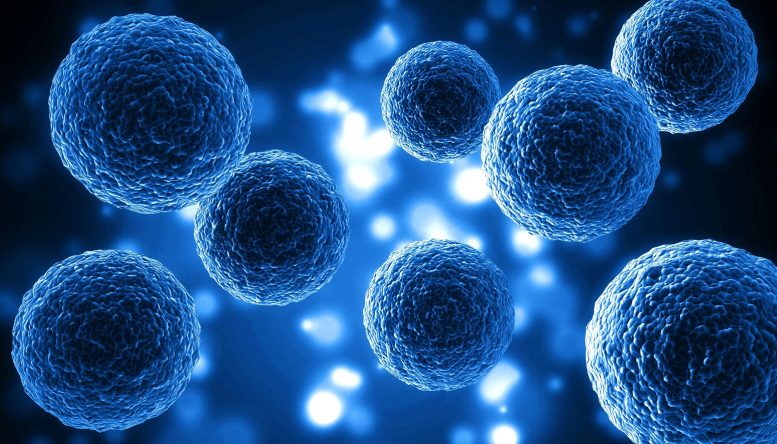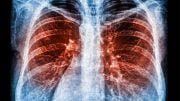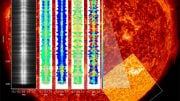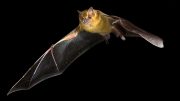
Two recent studies by Columbia University scientists reveal a significant error in stem cell research: the gut’s stem cells identified over 15 years ago are not the actual stem cells. New tools have uncovered the true stem cells, which are located differently and could reshape the field of regenerative medicine by enabling therapies that repair various organs.
Columbia University’s research has uncovered a longstanding error in identifying gut stem cells, finding the true stem cells in a different site, which could revolutionize regenerative medicine by applying these findings to other organs.
Two independent studies by Columbia scientists suggest that research into the gut’s stem cells over the past 15 years has been marred by a case of mistaken identity: Scientists have been studying the wrong cell.
Both studies were published in the journal Cell. The gut’s stem cells are some of the hardest-working stem cells in the body. They work continuously throughout our lives to replenish the short-lived cells that line our intestines. About every four days, these cells—covering a surface about the size of a tennis court—are completely replaced.
Understanding these workaholic stem cells could help scientists turn on less productive stem cells in other organs to repair hearts, lungs, brains, and more. The gut’s stem cells were supposedly identified more than 15 years ago in a landmark study.
But using new lineage tracing and computational tools, the Columbia teams, led by Timothy Wang and Kelley Yan, found that these cells are descendants of the gut’s true stem cells. The gut’s true stem cells are found in a different location, produce different proteins, and respond to different signals.
“The new work is controversial and paradigm-shifting but could revitalize the [entire?] field of regenerative medicine,” says Timothy Wang, the Dorothy L. and Daniel H. Silberberg Professor of Medicine.
“We know we’re making a lot of waves in the field, but if we’re going to make progress, we need to identify the true stem cells so we can target these cells for therapies,” says Kelley Yan, the Herbert Irving Assistant Professor of Medicine.
We recently spoke with Kelley Yan and Timothy Wang about the findings and implications.
Why does the gut need stem cells?
KY: What’s relevant to this story is a tissue called the intestinal epithelium. This is a single layer of cells that lines the gut and it’s composed of different types of cells that help digest food, absorb nutrients, and fight microbes.
Most of the cells live for only about four days before being replaced, so stem cells must create replacements.
What’s really remarkable about the intestinal lining is how big it is. If we were to fillet open your intestine and lay it flat, it would cover the surface of a tennis court.
The gut’s stem cells may be the hardest-working stem cells in the body.
The gut’s stem cells were supposedly identified in 2007, and the discovery was hailed as a breakthrough in stem cell science. What made you think this was a case of mistaken identity?
TW: For the last 17 years, the intestinal stem cell field has assumed that Lgr5, a protein on the cell’s surface, is a specific marker for intestinal stem cells. In other words, all Lgr5+ cells are assumed to be stem cells, and all stem cells are believed to be Lgr5+. These Lgr5+ cells were located at the very bottom of glands, or crypts, in the intestinal lining.
However, in the last decade, problems with this model began to appear. Deleting the Lgr5+ cells in mice, using a genetic approach, did not seem to bother the intestine very much, and the Lgr5+ stem cells reappeared over the course of a week. In addition, the intestine was able to regenerate after severe injury, such as radiation-induced damage, even though the injury destroyed nearly all Lgr5+ cells.
KY: By their very definition, stem cells are the cells that regenerate tissues, so these findings created a paradox. Many high-profile papers have evoked different mechanisms to explain the paradox: Some suggest that other fully mature intestinal cells can walk backward in developmental time and regain stem cell characteristics. Others suggest there’s a dormant population of stem cells that only works when the lining is damaged.
No one has really examined the idea that maybe the Lgr5+ cells really aren’t truly stem cells, which is the simplest explanation.
How did your labs identify the gut’s real stem cells?
TW: My lab collaborated with the former chair of Columbia’s systems biology department, Andrea Califano, who has developed cutting-edge computational algorithms that can reconstruct the relationships among cells within a tissue. We used single-cell RNA sequencing to characterize all the cells in the crypts, the region of the intestine where the stem cells are known to reside, and then fed that data into the algorithms.
These algorithms revealed the source of “stemness” in the intestine not in the Lgr5+ cellular pool but in another type of cell higher up in the crypts in a region known as the isthmus. After eliminating Lgr5+ cells with radiation or genetic ablation, we confirmed these isthmus cells were the gut’s stem cells and able to regenerate the intestinal lining. We didn’t find any evidence that other, mature cells could turn back time and become stem cells.
KY: We weren’t trying to identify the stem cells as much as we were trying to understand the other cells in the intestine involved in the regeneration of the lining. No one has been able to define these other progenitor cells in the intestine.
We identified a population of cells that were proliferative and marked by a protein called FGFBP1. When we asked how these cells were related to Lgr5+ cells, our computational analysis told us that these FGFBP1 cells give rise to all the intestinal cells, including Lgr5+, the opposite of the accepted model.
My graduate student, Claudia Capdevila, then made a mouse that would allow us to determine which cells—Lgr5+ or FGFBP1+—were the true stem cells. In this mouse, every time the FGFBP1 gene is turned on in a cell, the cell would express two different fluorescent proteins, red and blue. The red would turn on immediately and turn off immediately, while the blue came on a little later and lingered for days.
That allowed us to track the cells over time, and it clearly showed that the FGFBP1 cells create the Lgr5+ cells, the opposite of what people currently believe. This technique, called time-resolved fate mapping, has only been used a few times before, and getting it to work was a pretty incredible achievement, I thought.
How will this affect the stem cell field and the search for stem cell therapies?
TW: This case of mistaken identity may explain why regenerative medicine has not lived up to its promise. We’ve been looking at the wrong cells.
Past studies will need to be reinterpreted in light of the stem cells’ new identity, but eventually it may lead to therapies that help the intestine regenerate in people with intestinal diseases and possible transplantation of stem cells in the future.
KY: Ultimately, we hope to identify a universal pathway that underlies how stem cells work, so we can then apply the principles we learn about the gut to other tissues like skin, hair, brain, heart, lung, kidney, liver, etc.
It’s also thought that some cancers arise from stem cells that have gone awry. So, in understanding the identity of the stem cell, we might be able to also develop novel therapeutics that can prevent the development of cancer.
That’s why it’s so critical to understand what cell underlies all of this.
References: “Time-resolved fate mapping identifies the intestinal upper crypt zone as an origin of Lgr5+ crypt base columnar cells” by Claudia Capdevila, Jonathan Miller, Liang Cheng, Adam Kornberg, Joel J. George, Hyeonjeong Lee, Theo Botella, Christine S. Moon, John W. Murray, Stephanie Lam, Ruben I. Calderon, Ermanno Malagola, Gary Whelan, Chyuan-Sheng Lin, Arnold Han, Timothy C. Wang, Peter A. Sims and Kelley S. Yan, , Cell.
DOI: 10.1016/j.cell.2024.05.001
“Isthmus progenitor cells contribute to homeostatic cellular turnover and support regeneration following intestinal injury” by Ermanno Malagola, Alessandro Vasciaveo, Yosuke Ochiai, Woosook Kim, Biyun Zheng, Luca Zanella, Alexander L.E. Wang, Moritz Middelhoff, Henrik Nienhüser, Lu Deng, Feijing Wu, Quin T. Waterbury, Bryana Belin, Jonathan LaBella, Leah B. Zamechek, Melissa H. Wong, Linheng Li, Chandan Guha, Chia-Wei Cheng, Kelley S. Yan, Andrea Califano and Timothy C. Wang, , Cell.
DOI: 10.1016/j.cell.2024.05.004
Andrea Califano is founder, equity holder, and consultant of DarwinHealth Inc., a company that has licensed from Columbia University some of the algorithms used in this manuscript. Columbia University is also an equity holder in DarwinHealth Inc. U.S. patent number 10,790,040 has been awarded related to this work, assigned to Columbia University with Andrea Califano as an inventor.
The research was funded by the National Institutes of Health and the Burroughs Wellcome Fund.









Dear Admin:
The only people who may be upset with the intestinal stem cell reassignment report would be Hans Clevers and his many followers. The Clevers lab summarily declared multitudinous Lgr5+ cells in the intestinal crypt to be the stem cells, while dismissing all the previous work suggesting that only a few cells near the bottom of intestinal crypts are the asymmetrically self-renewing stem cells that maintain the cell turnover of intestinal villi.
Hopefully Wang and Yan will not commit the same scientific arrogance. Clevers, and all others claiming that all Lgr5+ cells are the stem cells of the small intestine responsible for intestinal epithelial cell homeostasis, need only look at their own data and the large number of Lgr5+ cells to know that not all of the Lgr5+ cells are intestinal tissue stem cells. Now, whether any Lgr5+ cells are the stem cells is another question, to which the answer could be “Yes”; but many, if not all, the Lgr5+ cells are most certainly committed progenitor cells descendent from the asymmetric divisions of the tissue stem cells.
Wang and Yan need to be very careful about three aspects of their conclusions:
1) In prior studies, only gastric intestinal stem cells have been located in the epithelial isthmus region. Never previously in the intestinal epithelium.
2) The use tissue cell damage and repair experiments to draw conclusions about normal tissue cell homeostasis by tissue stem cells is likely to be a quite invalid approach. This error in experimental strategy is well documented by years of failed research to define homeostatic liver tissue stem cells from liver damage and repair experiments.
3) Algorithmic approaches can be power methods to distill important inferences from complex data sets. They can also make up fairy tales. If you want to define homeostatic tissue stem cells well, you need either observational studies or cell transplant experiments conducted in experimental models that are as close to the normal tissue cell turnover state as possible.
James @ Asymmetrex®